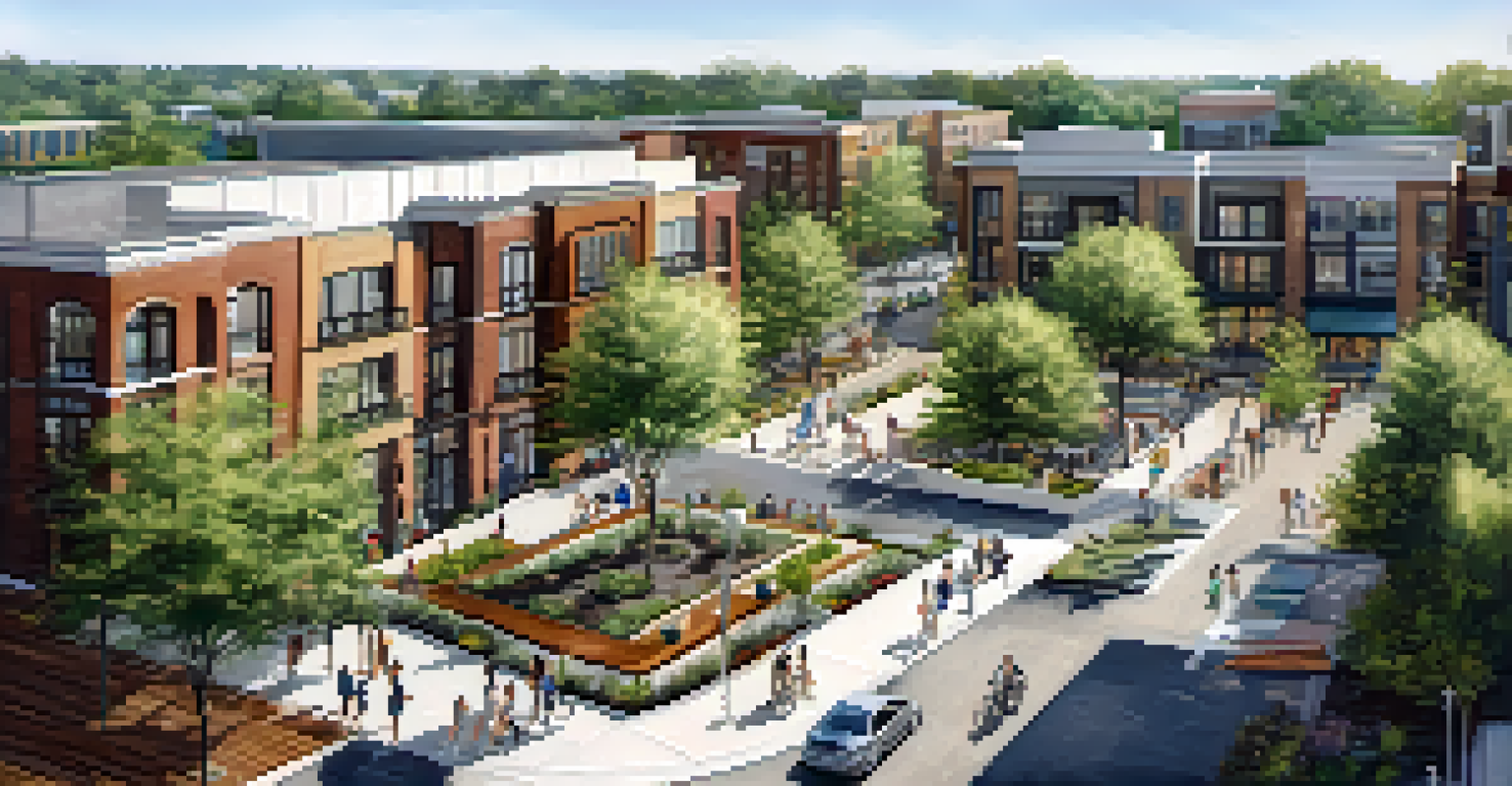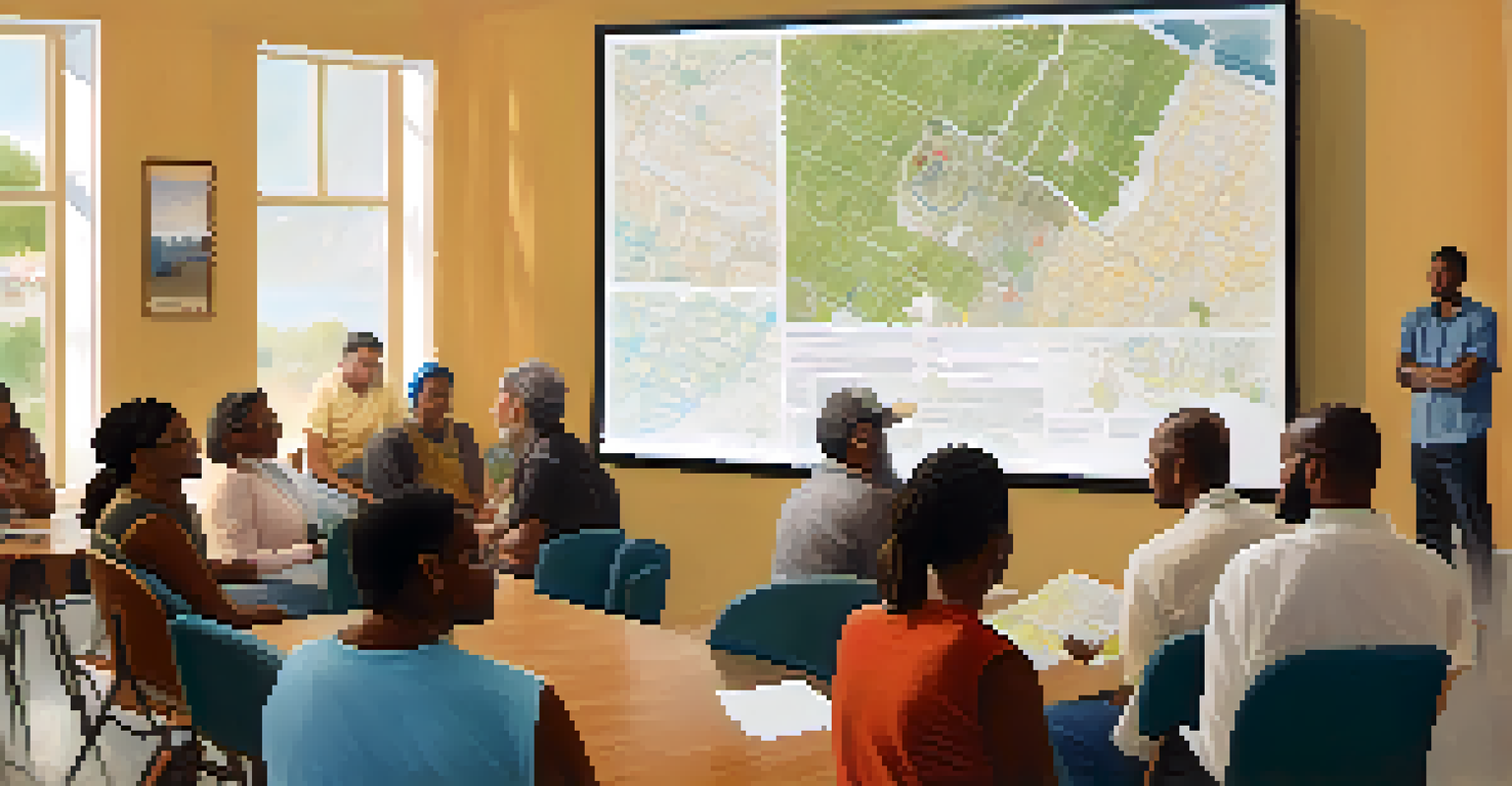Historical Evolution of Land Use Planning in Georgia State

The Origins of Land Use Planning in Georgia
Land use planning in Georgia can be traced back to the early 20th century when urbanization began to accelerate. As cities grew, the need for organized space became evident, leading to the first zoning laws. These laws aimed to separate residential areas from industrial and commercial zones, addressing concerns about public health and safety. This foundational step laid the groundwork for more comprehensive planning efforts in the decades to follow.
Planning is bringing the future into the present so that we can do something about it now.
The Great Depression further highlighted the need for better land use strategies as economic challenges forced communities to rethink their development approaches. During this time, federal programs provided both financial support and guidelines for urban planning. Local governments began to adopt more structured planning practices, emphasizing the importance of community involvement in decision-making processes.
By the mid-20th century, the suburban boom shifted focus toward managing growth outside urban centers. Planners began to consider transportation infrastructure and its role in shaping land use. This evolving perspective illustrated that land use planning was not merely about zoning but also about creating livable communities that catered to the needs of residents.
The Impact of the 1970s Environmental Movement
The 1970s marked a significant turning point in land use planning, driven largely by the environmental movement. Increasing awareness of environmental issues prompted planners to incorporate sustainability into their strategies. This shift encouraged the development of policies aimed at conserving natural resources and protecting ecosystems from urban sprawl.

In Georgia, the establishment of the Georgia Environmental Policy Act in 1991 further emphasized the importance of environmental considerations in land use decisions. This act required state agencies to evaluate the environmental impact of their projects, fostering a more holistic approach to planning. Community engagement became a vital element, as citizens began to demand a voice in how their surroundings were developed.
Evolution of Land Use Planning
Land use planning in Georgia has evolved from basic zoning laws to comprehensive strategies that prioritize community involvement and environmental sustainability.
As a result, planning in Georgia evolved to include not only land use but also environmental stewardship. This integrated approach helped to create a more sustainable framework for urban development, ensuring that future generations would benefit from a healthier environment and livable spaces.
The Role of Technology in Modern Land Use Planning
The advent of technology has revolutionized land use planning in Georgia over the last two decades. Geographic Information Systems (GIS) have become essential tools for planners, allowing them to analyze spatial data effectively. This technology enables the visualization of land use patterns, helping decision-makers understand complex relationships between various factors.
The best way to predict the future is to create it.
Moreover, the rise of digital mapping and online platforms has increased public access to planning information. Citizens can now engage with planning processes more easily, offering feedback and participating in discussions. This transparency fosters a sense of community ownership and encourages collaboration between residents and planners.
As technology continues to advance, the potential for data-driven planning is limitless. Tools such as predictive analytics promise to improve decision-making by forecasting future land use trends, ultimately leading to more informed and effective planning outcomes in Georgia.
Legislation Shaping Land Use Planning in Georgia
Legislation has played a critical role in shaping land use planning practices in Georgia. Key laws, such as the Georgia Planning Act of 1989, established a framework for local governments to create comprehensive plans. This act encouraged cities and counties to adopt coordinated planning efforts, ensuring that land use decisions aligned with broader community goals.
In addition, the Georgia Land Use Planning Act of 2008 further refined the planning process by promoting best practices and encouraging public participation. These legislative measures were designed to enhance accountability and transparency, enabling citizens to have a say in how their neighborhoods developed. As a result, local governments became more proactive in addressing community needs and concerns.
Technology's Impact on Planning
The integration of technology, such as Geographic Information Systems (GIS), has transformed land use planning by enhancing data analysis and public engagement.
The ongoing evolution of land use planning legislation in Georgia reflects a commitment to responsive governance. By continually adapting laws to meet changing circumstances, the state ensures that planning remains relevant and effective in promoting sustainable development.
Addressing Challenges in Urban Development
As Georgia's population grows, urban development challenges have become increasingly complex. Issues such as affordable housing, transportation congestion, and environmental degradation require innovative solutions. Planners are tasked with balancing the needs of current residents while accommodating future growth, which can often feel like walking a tightrope.
One approach to tackling these challenges is the concept of mixed-use development, which combines residential, commercial, and recreational spaces. This strategy promotes walkable communities and reduces reliance on cars, ultimately easing traffic congestion and enhancing quality of life. Planners in Georgia are increasingly exploring these types of developments to create vibrant, interconnected neighborhoods.
Additionally, collaboration among various stakeholders is essential to addressing urban development challenges. By involving community members, government agencies, and private developers, planners can develop comprehensive solutions that reflect the needs and desires of the community. This cooperative approach fosters trust and encourages a shared responsibility for crafting sustainable urban environments.
The Future of Land Use Planning in Georgia
Looking ahead, the future of land use planning in Georgia holds exciting possibilities. As communities become more aware of climate change and its implications, there is a growing emphasis on resilience and adaptability in planning practices. Planners are increasingly tasked with designing spaces that can withstand environmental challenges while promoting sustainability.
Furthermore, the integration of smart city technologies offers the potential for more efficient land use planning. By utilizing data and connectivity, cities can enhance services, streamline operations, and improve overall quality of life for residents. This shift toward innovation promises to reshape the planning landscape in Georgia significantly.
Community Engagement is Key
Active community involvement in planning processes ensures that development decisions reflect the values and needs of residents, fostering a sense of ownership and investment.
Ultimately, the future of land use planning in Georgia hinges on collaboration, flexibility, and a commitment to sustainability. By embracing these principles, the state can create thriving communities that meet the evolving needs of its residents while preserving the natural environment for generations to come.
Community Involvement in Land Use Decisions
Community involvement has become a cornerstone of land use planning in Georgia, reflecting a shift toward more inclusive decision-making processes. Public input is now seen as vital for ensuring that planning efforts align with the values and needs of residents. Planners actively seek community feedback through workshops, surveys, and public meetings, fostering a sense of ownership and engagement.
This collaborative approach has led to more successful planning outcomes, as communities feel more invested in the results. When residents have a voice in the planning process, they are more likely to support and uphold the decisions made. This unity can lead to better-maintained public spaces and a stronger sense of community identity.

Moreover, engaging diverse community members ensures that a variety of perspectives are considered. This inclusivity can help address historical inequities in land use decisions, making planning processes more equitable and just. As Georgia continues to evolve, the emphasis on community involvement will be crucial in shaping resilient and thriving neighborhoods.